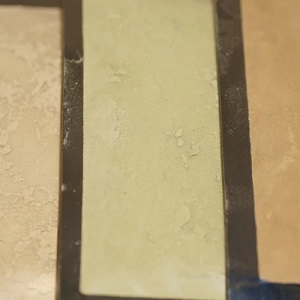You may be interested in learning more about kratom regions and zones, whether you’re new to ketum or an experienced user. As far as we know, ketum first grew in Southeast Asia. The wilds of Thailand, Malaysia, Indonesia, and Myanmar are common ketum regions. Indeed, Indonesia serves as the world’s primary ketum exporting hub.
Many people who use ketum want to learn how to grow their own ketum, so they can control the quality they get. Connected to the coffee plant family, growing Mitragyna speciosa or ketum is a difficult task due to the plant’s complexity. Still, growing your own ketum at home is not impossible if you follow certain instructions.
Let’s learn more about the ideal climate and soil for ketum cultivation.

Kratom Regions
Following are some of the Kratom Regions:
Malaysia
The drug is illegal in this conservative nation, yet it has made its way across borders to countries like Thailand.
Bali
Some of the best kratom regions in the world are in Indonesia. Indonesia is a well known tourist destination, which is characterized by a tropical rainforest climate and a highly developed tourist infrastructure.
Thailand
As a rapidly rising nation with a rich tradition of Mitragyna Speciosa use, Thailand is home to numerous kratom regions and strains. Capsules and extracts of Thai Mitragyna Speciosa are popular forms of preparation for export to Western markets.
Indonesia (non-Bali)
While the quality of the Mitragyna Speciosa exported from each country differs, Indonesia tops the list because of its size. “Indo” is a common shorthand for Indonesian herb.
Locations Ideal for Growing Ketum
The type of tree used to cultivate Mitragyna Speciosa depends on whether it will be an evergreen or a deciduous one in its natural habitat. Twelve to thirty feet tall and fifteen feet broad are the typical dimensions for a mature Mitragyna Speciosa tree. In its native environment, however, it has the potential to reach heights of 40–100 feet.
Indoors
Growing Mitragyna Speciosa is possible anywhere, so long as the plant is given the care it requires. In fact, the majority of gardeners opt to bring their kratom plant indoors till it reaches a specific size.
Outdoors
In a warm climate, Mitragyna Speciosa can be cultivated outside and brought inside before winter. There is no need for specialized equipment here. If the correct conditions (including soil, water, and sunlight) are provided, this herb will flourish.
Plant vs Seed
Only in the tropics or subtropics can you plant ketum trees in the ground without any special care. Growing Mitragyna Speciosa from seed can be challenging because the seeds must be sown quickly after harvest. This necessitates a rapid descent into the soil after they fall from the host tree, a difficult requirement as most kratom regions are in Southeast Asia.
For this reason, most shoppers go for potted plants instead of seeds. Getting a cutting from a living tree and nurturing it to maturity is the most effective way to cultivate ketum. The cuttings should go into a big pot to ensure the roots will be able to expand.
Many people who work with live plants and grow their own ketum remark on how quickly they develop. If you want to offer your plant the best chance of survival, you may need to prune it. Also, don’t forget to feed your Mitragyna Speciosa plants with fertilizer when they need it, especially when you first start growing them.
Cold Temperatures vs Greenhouse
Given the kratom regions we talked about, it is clear that ketum is a tropical tree that cannot stand the cold, requiring temperatures of between 70 and 90 degrees Fahrenheit. However, they flourish in a carefully managed greenhouse. If a Mitragyna Speciosa plant is placed in a temperate ketum region where winter occurs, it may go dormant and stop growing.
Under no circumstances should a kratom tree be left outside in temperatures below 60 degrees Fahrenheit. Older Ketum trees are more likely to survive in colder climates. But even they will perish in subfreezing temperatures. A tree’s growth rate may also decrease in a colder climate, so keep that in mind.
The best environment for growing Mitragyna Speciosa is in a greenhouse, as it gives this herb the boost it needs to flourish. Some people have managed to generate thermal heat using a tarp and the sun’s energy, protecting the plant from potentially harmful temperatures. Another tip is to mulch heavily around the tree’s trunk. By doing so, the roots will be protected from the cold and can continue to grow through the winter.
Conclusion
The effects of various Mitragyna Speciosa strains can be summarized by their respective kratom regions of origin. Due to their ancestors’ efforts to suit their new environments, all strains now exhibit their own unique characteristics. The native strain in each culture has been bred over time to suit its tastes. The majority of commercially available Mitragyna Speciosa is now cultivated in Indonesia, but the distinguishing features of each strain remain.

FAQs
1. What are different kratom strains?
There are many varieties of Mitragyna Speciosa available in different kratom regions. Typically, the place of origin is reflected in the name. The Ketum leaves’ active ingredients are modified by the climate in which they matured over many years.
2. What are the Kratom Regions to grow ketum outdoors?
Kratom regions include Ville (Florida), Key West (Florida), Orlando (Florida), Oviedo (Florida), Sarasota (Florida), Santa Fe (Texas), Midlothian (Virginia), Renton (Washington).
3. Where to grow Ketum?
You can grow Ketum in the great outdoors, within the Climate Zones, in confined spaces and even indoor in a sterile setting.
4. What is the Thai Kratom Region?
Ketum was traditionally used as an offering to honor the Thai people’s ancestors and deities during religious ceremonies. Thai Mitragyna Speciosa comes in a wide variety of vein colors, with red kratom used for natural pain relief and white and green Mitragyna Speciosa used to boost energy and concentration.
5. What is Sumatra the Kratom Region?
The beautiful mountains of Sumatra island provide a barrier to the clouds that blow in from the Indian Ocean, ensuring a steady supply of rain and humidity for the tropical swamplands that give this strain its distinctive flavor. For decades, the ketum here has contributed to the health and happiness of the local community.


Latest from our blog
Please Read….This is Urgent
In loving memory of Ryan, a special individual who recently passed away, we honor his [...]
Damiana Exposed: Special Look At Turnera diffusa (2023)
Damiana Exposed: Special Look At Turnera diffusa (2023) Damiana is a wild shrub native to [...]
Kanna: A New Look At An Exciting Mood Booster (2023)
What is kanna? Some say the botanical has similar effects to MDMA, or ecstasy. Others [...]
Blue Lotus Flower: Unveiling Its Mystical & Therapeutic Powers
To cut to the chase and pickup potent 25x blue lotus extract today while enjoying [...]
Red Bubble Kratom Extraction: A Comprehensive Guide
As a kratom enthusiast, have you ever wondered if there was a method for getting [...]
Aug
Maeng Da Kratom 101: Accurate Info You Can Trust
Maeng Da kratom may be the most popular kratom strain on the market today. The [...]
Aug